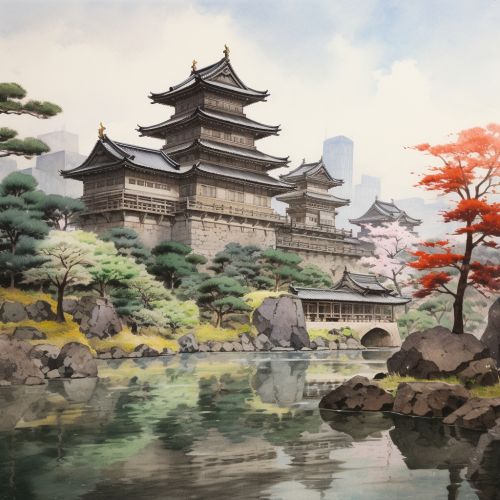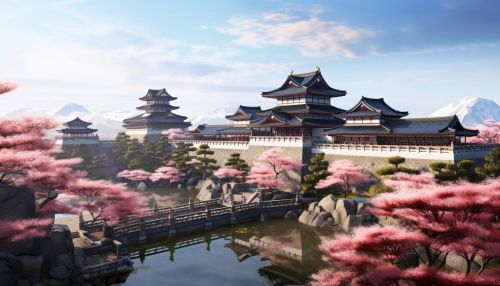Tokugawa shogunate
Origins
The Tokugawa shogunate, also known as the Tokugawa bakufu (徳川幕府) and the Edo bakufu (江戸幕府), was the last feudal Japanese military government, which existed between 1603 and 1867. The head of government was the shogun, and each was a member of the Tokugawa family.
The Tokugawa shogunate ruled from Edo Castle and the years of the shogunate became known as the Edo era. This time is also called the Tokugawa period or pre-modern.


Establishment
The Tokugawa shogunate was established at the end of the Battle of Sekigahara on October 21, 1600. The battle was a decisive victory for Tokugawa Ieyasu, who became the shogun and established a new shogunate in Edo, modern-day Tokyo.
Structure and Administration
The Tokugawa shogunate was a complex, multifaceted bureaucracy. It was characterized by a rigid hierarchy and a high degree of centralization. The shogunate was the sole authority in charge of the administration of the country, including the daimyo (feudal lords).
The shogunate's administration was divided into several departments, each headed by a bugyō (commissioner). The most important of these were the rojū, or elders, who were directly responsible to the shogun.
Society and Culture
The Tokugawa period was characterized by a strict social order, based on the philosophy of Confucianism. Society was divided into four classes: samurai, peasants, artisans, and merchants. This period also saw the flourishing of various forms of Japanese culture, such as kabuki theater, ukiyo-e painting, and the tea ceremony.
Decline and Fall
The Tokugawa shogunate's rigid system of control started to break down in the 19th century. The arrival of Commodore Matthew Perry and the "Black Ships" in 1853 forced Japan to open up to foreign trade and exposed the shogunate's inability to defend the country from foreign threats. This led to a period of political instability, known as the Bakumatsu, which culminated in the Boshin War and the Meiji Restoration.
Legacy
The Tokugawa shogunate left a lasting legacy on Japan and its culture. The period of peace and stability it provided allowed for the development of a unique Japanese culture and the growth of urban centers. The shogunate's policies also laid the groundwork for the modernization of Japan during the Meiji period.
